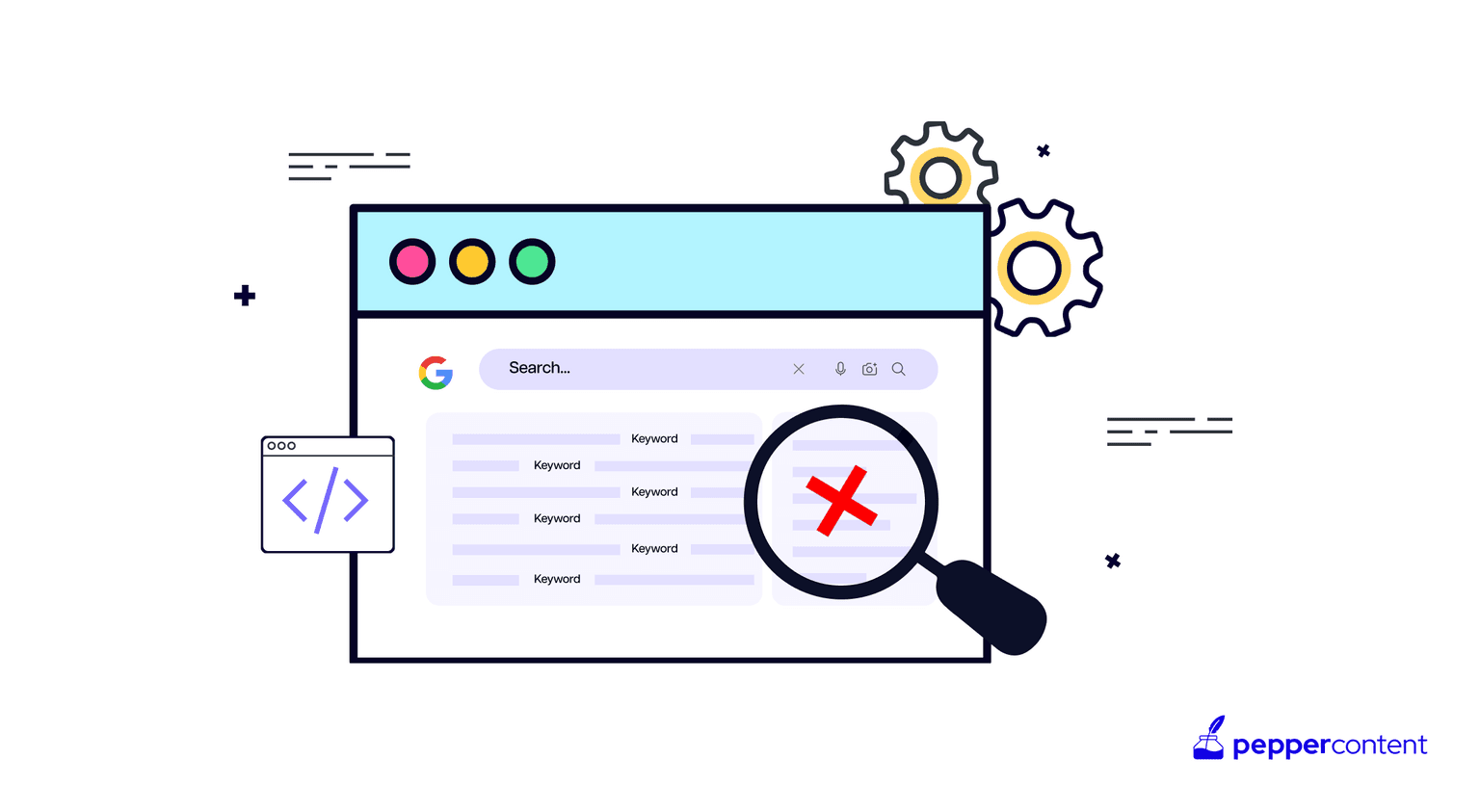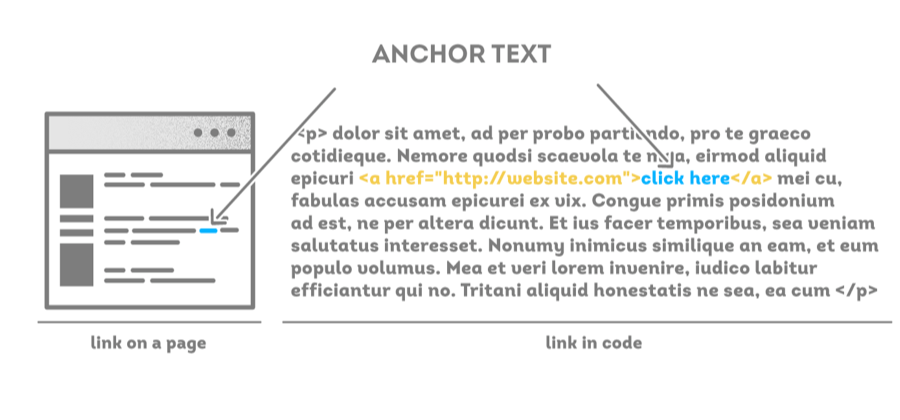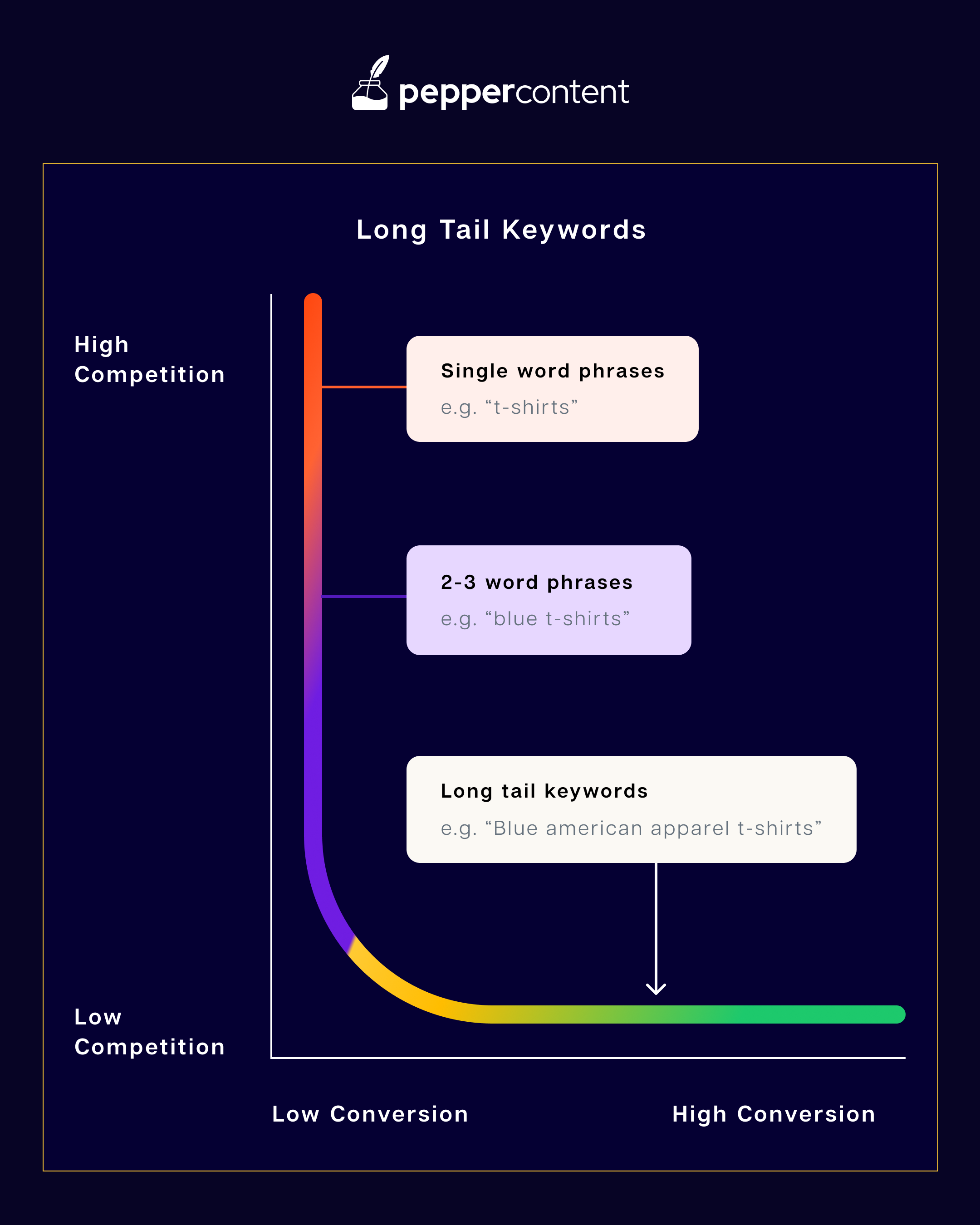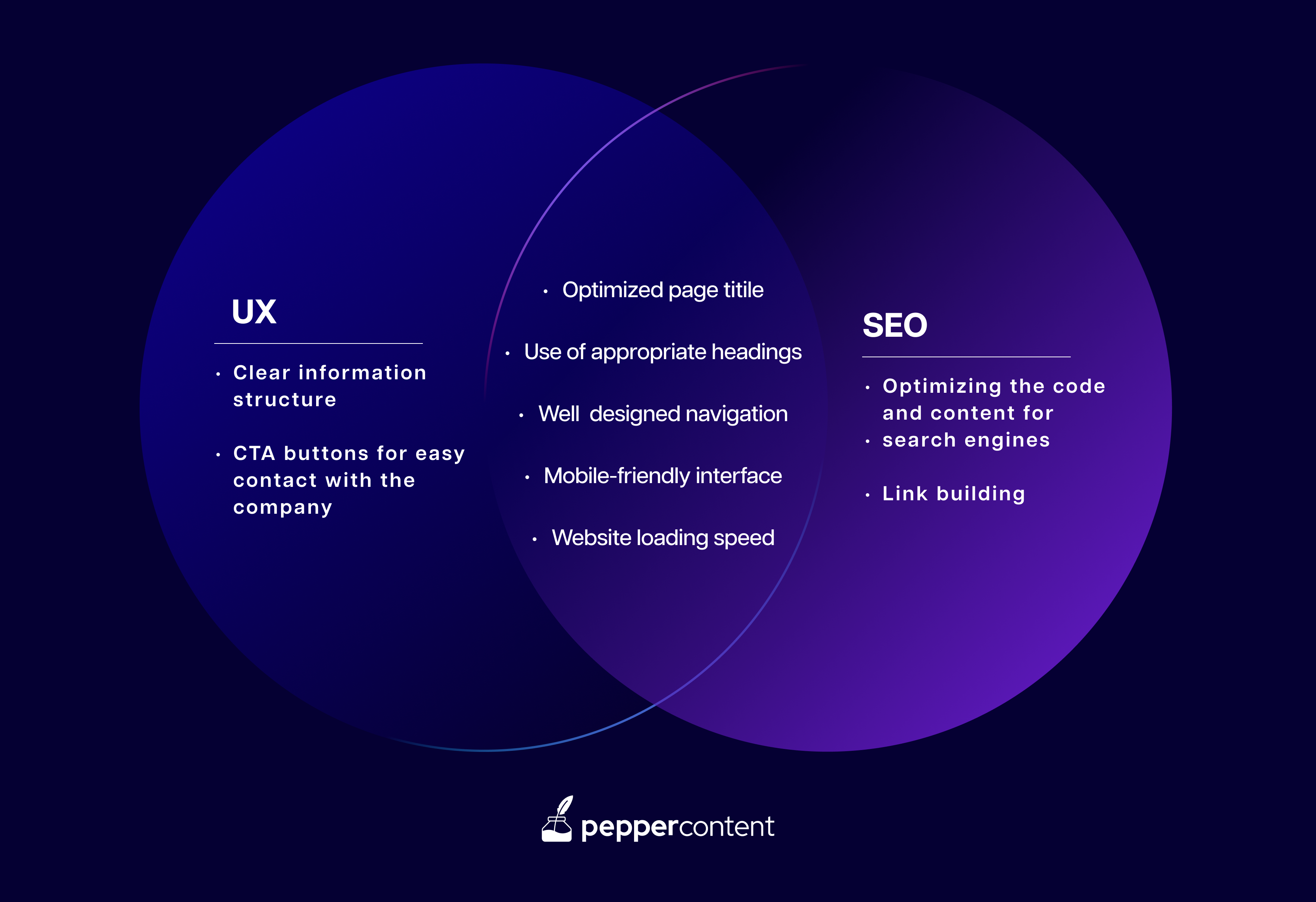Oops, I Think I SEO’d Too Much! What is Search Over-Optimization and How to Fix It

Imagine you’re running a race, but instead of pacing yourself, you sprint right from the start. That’s what search over-optimization is like in the SEO world. It’s the excessive use of tactics meant to boost your site’s ranking, but it can actually lead to the opposite effect.
Let’s say you cram a page with too many keywords. Instead of climbing the search ranks, your site might drop because search engines see this as manipulative. This not only hurts your visibility but also spoils the experience for your visitors.
In this blog, you’ll learn how to strike the perfect balance with SEO, avoiding the pitfalls of over-optimization while enhancing your site’s performance. So, while SEO is a powerful tool, overdoing it can backfire spectacularly.
What is search over-optimization, exactly?
Search over-optimization happens when a site goes overboard with SEO strategies, aiming to cheat its way to the top of search results. For instance, imagine stuffing a webpage with the same keyword 50 times. Instead of improving its rank, this overwhelms the content and can lead to penalties from search engines. This approach crosses the line from optimizing to overdoing and can harm a site’s credibility and ranking.
Spotting the red flags of over-optimization
Over-optimization is like adding too much salt to a dish; it can ruin the whole meal. Just as too much salt overwhelms a meal, excessive SEO tactics can spoil a website’s appeal and credibility. Here’s how to spot the red flags:
- Keyword Flooding
This is when a webpage is stuffed with an unnatural number of keywords. Imagine reading a paragraph where every other word is “organic gardening.” It feels forced and unnatural. Not only does this make the content hard to read, but search engines also recognize this tactic and may penalize the site, leading to a drop in rankings.

- Backlink Overload
While backlinks are essential for SEO, too many low-quality or irrelevant links can signal to search engines that you’re trying to game the system. It’s like having a lot of acquaintances but few real friends; the quantity might be high, but the quality is low. Search engines value the quality and relevance of backlinks more than the quantity. A site with hundreds of poor-quality backlinks can be seen as less credible than one with a handful of high-quality ones.
Also Read: 14 Tips On How To Get Backlinks
- Unnatural Internal Linking
Internal links help users navigate your site, but overdoing it with too many links or using overly optimized anchor text (like always linking the word “best laptops” to a product page) can appear manipulative. It’s like a store with too many signposts to the same product; it feels pushy and can frustrate visitors.
Also Read: A Guide to Running an Internal Link Audit To Improve SEO
- Excessive Anchor Text
Using the same exact anchor text for many links across your site can look suspicious. If every link to your page about “healthy diets” uses the anchor text “best healthy diets,” it doesn’t look natural. Diverse and contextually relevant anchor text is crucial. It should flow naturally in the content, not stick out or repeat unnaturally.

These practices can degrade the user experience by making content hard to read and navigate. They can also diminish website credibility as they signal to both users and search engines that the site’s main goal isn’t to provide valuable content but to manipulate rankings.
Understanding these red flags is the first step in creating a more user-friendly and search engine-friendly website.
Unraveling the Impact: The fallout of over-optimization
When a website over-optimizes, it steps into risky territory, facing severe consequences that can undermine its long-term success, credibility, and user trust. Let’s delve into the significant fallout of pushing SEO tactics too far:
- Search Engine Penalties
Over-optimization is a red flag for search engines, which may respond with penalties. These can range from lower rankings to complete removal from search results.
For example, Google’s algorithm updates, like Penguin, specifically target sites with unnatural backlink profiles.
A penalty from a major search engine can significantly decrease a website’s visibility, leading to fewer visitors and lost revenue.
- User Disengagement
Websites stuffed with keywords or littered with awkward links disrupt the user experience. Visitors are looking for valuable, easily digestible information.
When they encounter content that’s clearly designed for search engines rather than humans, they’re likely to leave and not return.
This increase in bounce rate not only affects your reputation but also signals to search engines that users aren’t finding what they need on your site.
- Tarnished Brand Reputation
Over time, if users consistently encounter poor-quality content, they’ll begin to associate your brand with a lack of credibility and authority. Rebuilding trust after it’s lost is a long and challenging process. A tarnished reputation can have a far-reaching impact, affecting everything from user loyalty to partnerships.
Mini Case Study: J.C. Penney’s Over-Optimization Crisis
In the early 2010s, J.C. Penney was caught in a major SEO scandal. They had used aggressive tactics, securing backlinks from numerous low-quality sites to boost their rankings. When exposed, Google penalized them, causing their rankings to plummet and significantly reducing their online traffic and sales. The incident tarnished their reputation and highlighted the risks of over-optimization. It took J.C. Penney months of revising their strategy and cleaning up their backlink profile to recover, demonstrating the importance of ethical SEO practices.

Understanding the impact of over-optimization is crucial. It’s a reminder that while SEO is important, it should never compromise the quality of your site or the experience you provide to your users. Balancing SEO practices with genuine, user-focused content is the key to sustainable success and a strong online presence.
Striking the Balance: SEO Best Practices
Navigating SEO is like walking a tightrope; it requires balance and precision to reach success. Here are strategies to help you maintain this equilibrium without tipping over:
- Effective Keyword Usage
Keywords are the backbone of SEO, but they must be used thoughtfully. Instead of stuffing, sprinkle them naturally throughout your content, including titles, headings, and the body. Use variations and long-tail keywords that reflect how real people speak and search.

- Quality Content Creation
High-quality, valuable content is king. It should answer questions, solve problems, or provide insights. Search engines favor content that users find helpful, so focus on creating pieces that are informative, well-researched, and engaging.
- Natural Backlinking
Earn backlinks naturally by creating share-worthy content. Collaborate with reputable sites, engage in community discussions, and produce material that establishes your authority. Quality backlinks from reputable sources boost your credibility and rankings.
- Smart Internal Linking
Use internal links to guide visitors through your website, but do so sensibly. Link-related content to keep users engaged and help search engines understand your site structure. Use descriptive, varied anchor text that gives a clear idea of the linked page’s content.
Here are quick tips for better internal linking and anchor text usage:
- Link to relevant content to keep users engaged and provide additional value.
- Avoid overusing the same anchor text to maintain a natural flow.
- Regularly check and update internal links to ensure they’re current and functional.
- Regular SEO Audits
Regularly audit your site to identify and fix issues like broken links, outdated content, or over-optimization. Tools like Google Analytics and Search Console can help track your site’s performance and highlight areas for improvement.
By focusing on these balanced SEO practices, you’re not just optimizing for search engines; you’re creating a better experience for your users. This approach leads to organic growth, higher engagement, and a solid reputation, ensuring your site remains both visible and credible in the long term.
Sharpening your tools: Monitoring and adjusting SEO
To refine your SEO strategies effectively, you need to monitor performance and adjust tactics as needed. Think of it as honing your tools to ensure they’re always sharp and ready. Here’s how you can do this:
- Make the Most of Your SEO with These Cutting-Edge Tools:
Dive into the world of SEO with tools that transform data into strategy. Prepare to explore how these tools can elevate your SEO game.
- Google Analytics: This free tool is like the Swiss Army knife of SEO. It provides a wealth of data about website traffic, user behavior, and conversion rates. Its Universal Analytics feature allows you to track users across platforms and devices, giving you a comprehensive view of how your content performs. Use it to identify which pages hold visitors’ attention and which might need a tweak.
USP: Real-time data and user insights.
- Pepper Content Marketing Platform (CPM): This platform is tailored for content creators. It not only helps in creating content but also provides insights and analytics, making it easier to understand what works and what doesn’t. It’s particularly useful for managing and scaling content production across teams.
USP: Streamlines content creation and provides performance insights.
- SEMrush: SEMrush is a powerful tool for tracking keywords, competitors, and backlinks. It offers a comprehensive suite of features that can help you understand your search engine rankings and identify opportunities for improvement.
USP: In-depth competitor and keyword analysis.
- Interpreting Data
With these tools, you’ll gather a lot of data, but it’s crucial to know what to look for. Track changes in traffic, bounce rates, and conversion rates. Look for trends or sudden changes that might indicate a problem or an opportunity.
- Adjusting Strategies
Based on your findings, adjust your content and SEO strategies. Maybe you’ll find that certain types of posts do particularly well, or that specific keywords are driving traffic. Use this information to inform your future content and optimization efforts.
- Staying Informed
SEO is always evolving. What worked yesterday might not work tomorrow. Stay informed about the latest trends and algorithm updates. Follow SEO blogs, attend webinars, and participate in online forums. The more you know, the better you can adapt and thrive.
By using these tools and continually refining your approach based on data, you’ll keep your SEO strategy sharp and effective, ensuring your site continues to perform well in search rankings.
Crafting a future-proof SEO strategy
To ensure your SEO strategy remains effective in the long run, it’s crucial to focus on two core elements: user experience and valuable content. Here’s how you can craft a future-proof SEO strategy:
- Prioritizing User Experience (UX)
UX is at the heart of modern SEO. Search engines favor sites that provide a smooth, intuitive experience. This means fast loading times, mobile responsiveness, and easy navigation. By making your site user-friendly, you’re not just catering to algorithms, but you’re also making your site more enjoyable and accessible for your audience.

- Creating Valuable Content
Content is the cornerstone of your SEO strategy. Instead of churning out quantity, focus on quality. Create content that answers questions, provides insights, or solves problems. Engaging, informative content will keep users coming back and encourage them to share, naturally boosting your site’s authority and relevance.
- Holistic SEO Approach
A robust SEO strategy doesn’t operate in a vacuum. It involves integrating technical SEO, content marketing, and social media. Ensure your website is technically sound with a clean structure, proper tagging, and no broken links. Pair this with a strong content strategy that addresses your audience’s needs and interests. Finally, use social media to share your content and engage with your audience, driving traffic back to your site.
- Sustainable Growth
Sustainable growth in SEO means staying updated with the latest trends and algorithm changes. Regularly revise your strategies to adapt to new technologies and user behaviors. For example, voice search is becoming increasingly popular, so consider how you can optimize your content for voice queries.
By focusing on user experience, creating valuable content, adopting a holistic approach, and aiming for sustainable growth, you’re not just optimizing for search engines; you’re building a resilient online presence that will stand the test of time and technological changes.
Commit to a balanced and ethical SEO journey: Final thoughts
In conclusion, a successful SEO journey is about balance and ethics. It’s vital to prioritize quality and user experience over quick, short-term gains. A well-rounded, long-term strategy, grounded in ethical practices, ensures sustainable growth and a strong online presence.
Embrace continuous learning and be ready to adapt to evolving SEO trends and algorithms. Remember, the goal of SEO is not just to rank higher but to provide value to your audience, building trust and credibility. By committing to these principles, you’ll not only achieve better rankings but also create a meaningful and lasting impact.
Want to use organic marketing to supercharge your growth? Don’t forget to check out Pepper Content’s organic marketing stack.
Latest Blogs
Learn how to rank on AI search engines like ChatGPT, Perplexity, and Gemini by optimizing your content for authority, structure, and relevance. Stay ahead in AI-driven search with this strategic guide.
Explore the best healthcare SEO services for your medical practice. Improve online visibility and effectively reach more patients in need of your services.
Discover top social media agencies specializing in banking solutions, enhancing financial services and driving engagement.
Get your hands on the latest news!
Similar Posts

Organic Marketing
9 mins read
What is AMP? A Beginner’s Guide to AMP Pages & SEO

Organic Marketing
11 mins read
What is Search Intent and Why is it Fundamental to SEO?

Organic Marketing
8 mins read